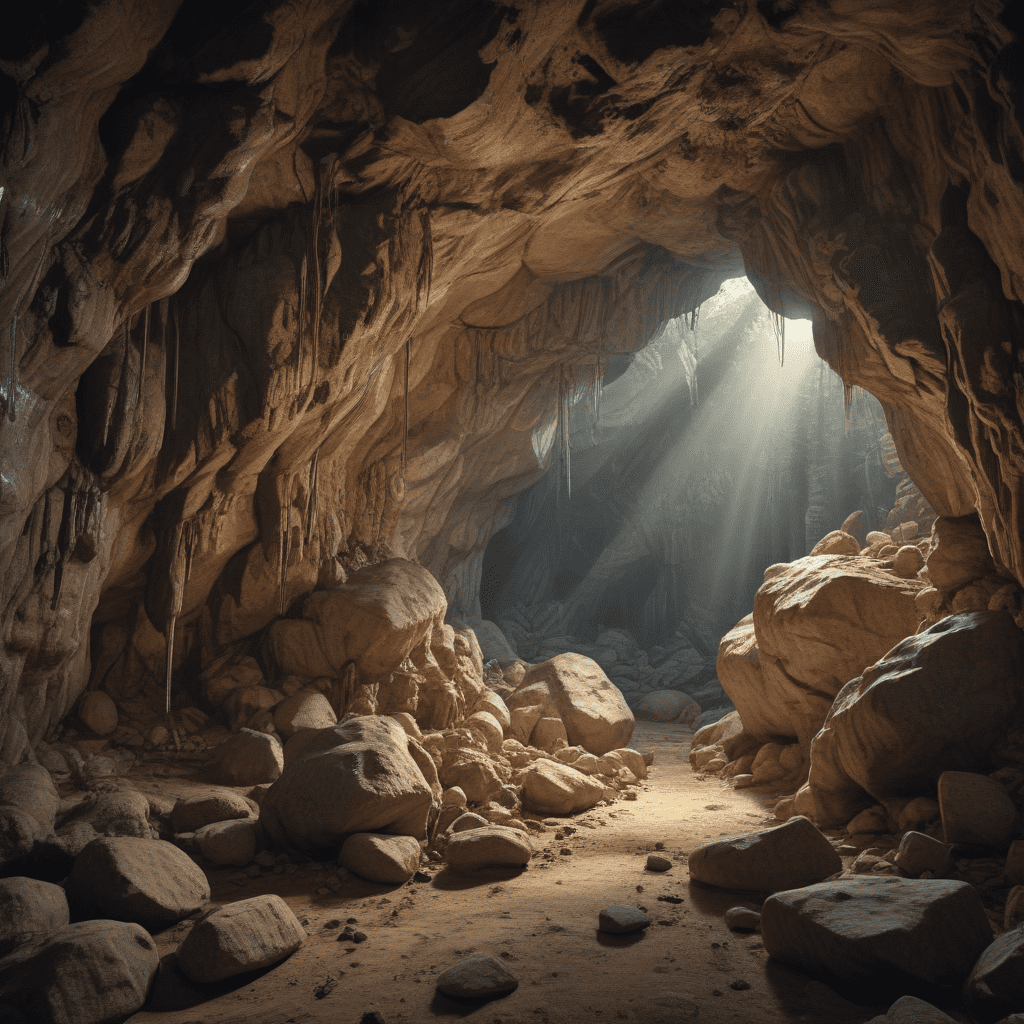The Symbolism of Caves in Finnish Mythology
Caves hold a profound significance in Finnish mythology, embodying multifaceted symbolism that has permeated the cultural landscape for centuries.
Historical and Cultural Significance of Caves in Finland
Throughout Finnish history, caves have served practical purposes, offering shelter to ancient inhabitants and later becoming sites for religious rituals. The earliest known evidence of human presence in caves in Finland dates back to the Stone Age, indicating their long-standing cultural significance.
The Cave as a Symbol of the Underworld and the Abode of the Dead
In Finnish mythology, caves are often depicted as the gateways to the underworld, known as Tuonela. The dead were believed to dwell in these subterranean realms, and caves served as portals for communication between the living and the deceased. Accordingly, caves were often associated with fear and reverence, as they represented the transition to the afterlife.
The Cave as a Symbol of Rebirth and Transformation
In contrast to their association with death, caves also symbolize rebirth and transformation in Finnish mythology. The hero Väinämöinen, a central figure in the Kalevala, is said to have emerged from the womb of the earth in a cave. This myth underscores the cave's role as a place of gestation and renewal, where individuals could undergo profound changes.
The Cave as a Symbol of Hidden Knowledge and Wisdom
Caves are often portrayed as repositories of hidden knowledge and wisdom in Finnish folklore. The wise old man Väinämöinen is said to possess a magical harp that he keeps in a cave, symbolizing the profound knowledge and wisdom that can be found in these subterranean realms.
The Cave as a Symbol of the Female Principle
Caves have a strong association with the female principle in Finnish mythology. They are often seen as the womb of the earth, a nurturing space where new life can be created. The goddess Louhi, the powerful mistress of the underworld, is said to dwell in a cave, highlighting the feminine power and mystery that caves represent.
The Cave as a Symbol of the Subconscious Mind
Caves can also symbolize the subconscious mind in Finnish mythology. They are often depicted as hidden places where deep-seated thoughts, emotions, and memories are stored. The hero Väinämöinen is said to have descended into a cave to retrieve a stolen knowledge, representing the journey into the depths of one's own subconscious.
The Cave as a Symbol of the Creative Process
Caves can serve as a symbol of the creative process in Finnish mythology. They are often seen as places of inspiration and imagination, where new ideas can be born. The goddess Ilmatar, the mother of the world, is said to have given birth to the universe in a cave, highlighting the creative power that caves embody.
The Cave in Finnish Folklore and Literature
Caves feature prominently in Finnish folklore and literature. In the Kalevala, the Finnish national epic, the hero Väinämöinen is said to have visited the caves of Tuonela to seek knowledge and wisdom. In the epic poem "Kullervo," the protagonist is abandoned as a child in a cave, symbolizing his isolation and despair.
Conclusion
Caves hold a deep and multifaceted symbolism in Finnish mythology. They represent the underworld and the abode of the dead, rebirth and transformation, hidden knowledge and wisdom, the female principle, the subconscious mind, and the creative process. Through their rich symbolism, caves have become an integral part of the Finnish cultural landscape, inspiring awe, wonder, and imagination.
FAQs
Q: What is the significance of caves in Finnish mythology?
A: Caves are powerful symbols in Finnish mythology, representing the underworld, rebirth, hidden knowledge, the female principle, the subconscious mind, and the creative process.
Q: What is the most common mythological association with caves in Finland?
A: Caves are most commonly associated with the underworld and the abode of the dead in Finnish mythology.
Q: What famous Finnish mythological figure is associated with caves?
A: Väinämöinen, the hero of the Kalevala, is often associated with caves, as he is said to have visited Tuonela and retrieved stolen knowledge from a cave.



